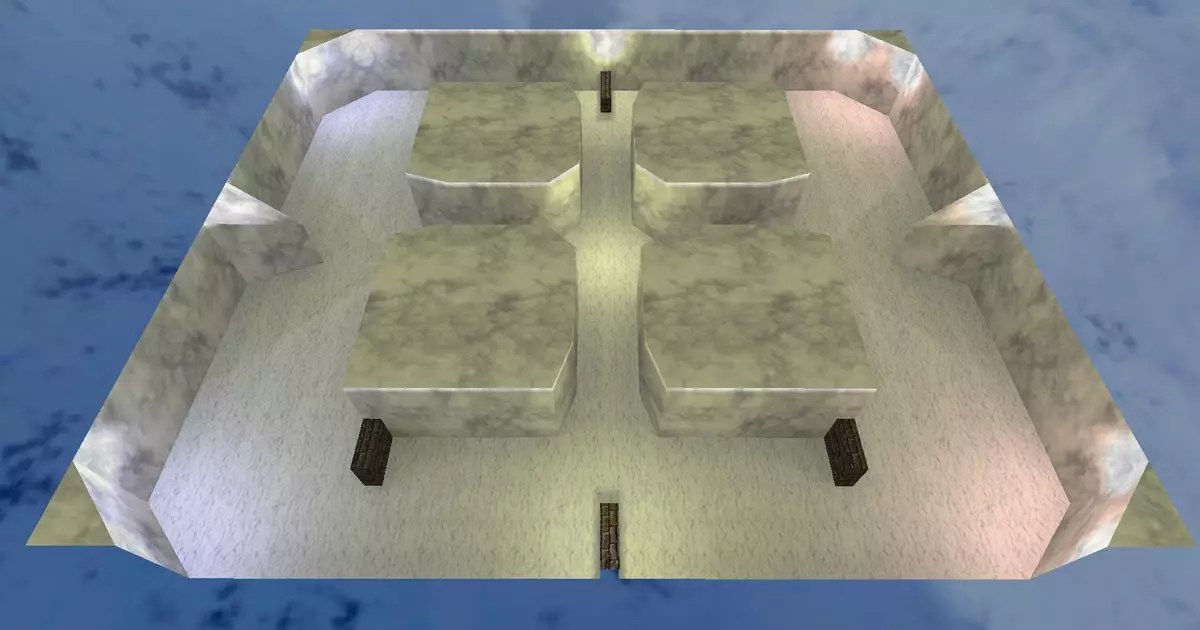In the contemporary landscape of multiplayer gaming, where innovation often takes a backseat to graphics and blockbuster marketing, it’s refreshing to see a title like **Straftat** emerge and resonate with players. This game encapsulates the essence of straightforward shoot-‘em-up enjoyment while conjuring memories of fast-paced gameplay reminiscent of classic titles like Quake and Call of Duty’s Warzone. The introduction of new maps and a plethora of features showcases a dedication to evolving player experience while retaining the core elements that made it captivating in the first place.
At its heart, **Straftat** appeals to players who yearn for the simplicity and thrill of arenas that demand quick reflexes and sharpshooting skills. The recent update has expanded its already impressive map selection by introducing an additional 30 arenas, bringing the total to an exhausting 180. This commitment to providing a varied landscape for combat reflects an understanding of gaming culture that values both originality and homage. Among these new offerings, the fan-favorite, icy map reminiscent of Counter-Strike’s **Iceworld**, invites players to engage in whimsical battles that reflect its origins.
The inclusion of maps based on iconic titles isn’t merely a nod to nostalgia; it’s a strategic move intended to create a bridge between generations of gamers. References to classic settings stimulate fond memories while encouraging new players to explore the heritage of arena shooters. By integrating such cultural touchpoints, **Straftat** becomes more than just a game; it evolves into a curated anthology of competitive gaming history.
In addition to the expansive new maps, **Straftat** has also introduced nine innovative weapons, including intriguing selections like a katana and the obscure 1950s prototype submachine gun, the Hill H15. These options not only increase the arsenal available but also allow players to experiment with varied combat styles, fostering a dynamic combat environment. The development team, Lemaitre Bros, appears to have tapped into both historical significance and modern utility in crafting these additions.
Moreover, the option to curate map playlists and the introduction of a tutorial level reflect a commitment to accessibility. This makes the game inviting to newcomers while allowing veterans to tailor their experiences. The notion of active playlists opens the door for customized multiplayer encounters, something that can invigorate casual play and competitive environments alike.
With the recent update, **Straftat** not only grasps at the robust legacy of its predecessors but also showcases its potential as a contemporary classic. The developers’ efforts have created an enriching ecosystem where players can engage in exhilarating matches, relishing the transient nature of the combat environment. The blend of homage and innovation fosters a platform conducive to both competitive gameplay and social interaction, solidifying **Straftat’s** position within the gaming community.
As the landscape of gaming continues to evolve, it is clear that titles like **Straftat** serve as vital reminders of what makes competitive shooters enjoyable. They highlight the thrill of evasion and combat mastery, wrapped within maps that tell stories of their own. The game’s trajectory suggests that rather than focusing solely on graphical fidelity, developers ought to consider the player experience—rich with variety, depth in gameplay, and a sprinkle of nostalgia.
Ultimately, **Straftat** is not just a game but a celebration of the tumultuous, passionate multiplayer moments that generations have cherished. As it moves forward, one can only hope that it will continue to innovate while paying homage to the past—fueling the multiplayer renaissance that many players are so eager to embrace.


Leave a Reply